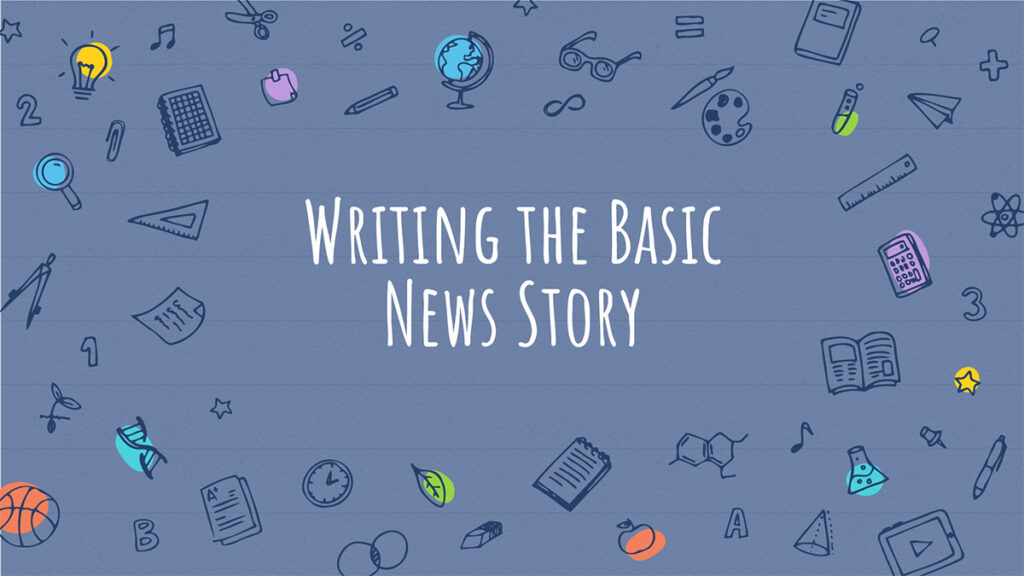Writing the Basic News Story
The Basics
A news story should convey basic information to an audience. Many journalists live by the 5 W’s and H to formulate questions and gather information for the story. Always try to ask questions that relate to who, why, what, where, when and how. If your story conveys that information, the audience will have and understand the basic information of an event or an issue. Teachers can use this slide presentation and share it with their students.
Download the teacher slideshow:
Conducting the Interview
Unless a journalist witnesses an event or attends a meeting, they will have to gather information through other means. The interview stands as the most effective means for gathering information. The interview also will generate quotes that the reporter can use in the story. Journalists might find different ways to gather information—examining the public record, sifting through reports or documents, seeking background information on the Internet, all of which will augment the information they gather through the interview. Reporters who become adept at conducting the interview will ultimately write better news stories.
The Inverted Pyramid
Journalists who learn this structure often rely on it when they must write a story on deadline. If they know the format, they will not have to spend time developing an organizational structure. They can just write.
With this format journalists will structure the story so the most important facts of the story appear first. Then they will include facts of lesser importance. The body of the story will include details and pertinent quotes from sources.
Readers, who only read a couple of paragraphs into a story, will still receive the most important information. The format also makes it easier for editors to cut the story if the least important facts appear at the end of the story. Editors will cut copy from the bottom of the story.
The Lead
“The most important sentence in any article is the first one. If it doesn’t induce the reader to proceed to the second sentence, your article is dead.”
—William Zinsser, On Writing Well
A good lead gives readers the most important information in a clear, concise and interesting manner. It also establishes the voice and direction of an article.
Before writing a lead, decide which aspect of the story—who, what, when, where, why, how—is most important. Emphasize those aspects in your lead. Wait to explain less important aspects until the second or third sentence.
A reporter should consider many factors in writing a good news lead.


